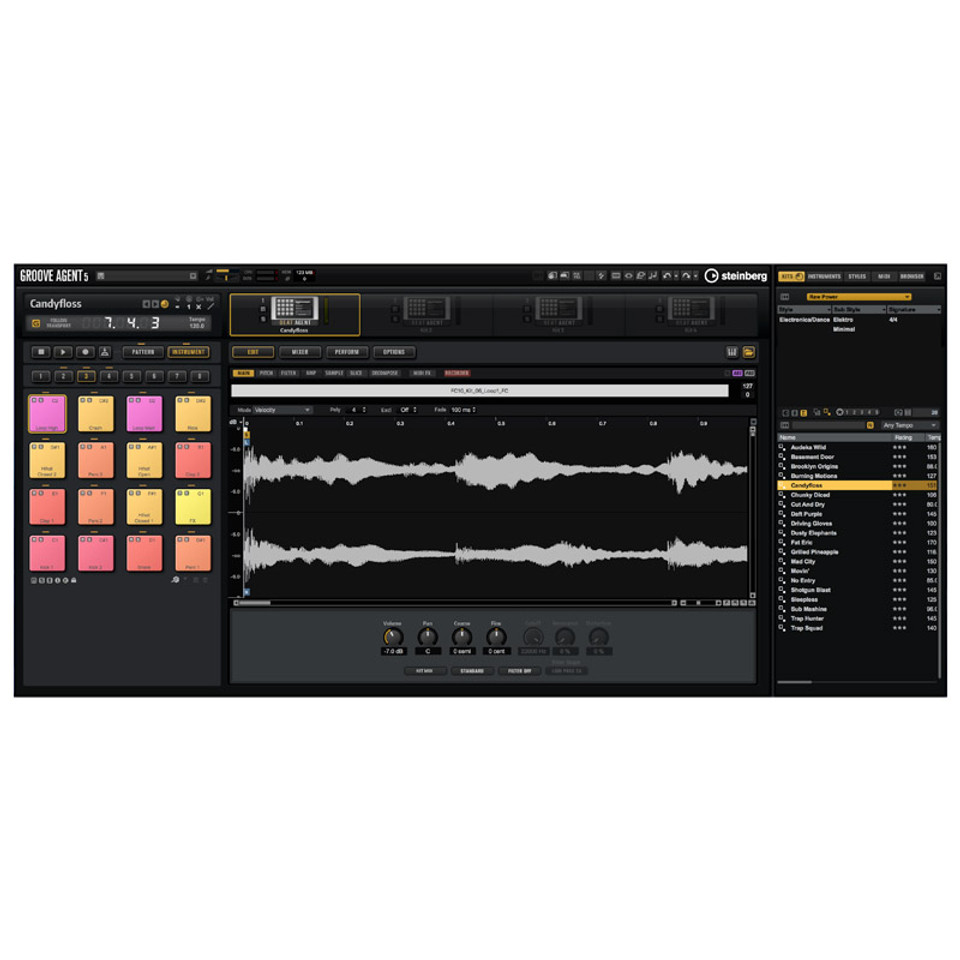

Many are bundled with Cubase and you can easily drag in patterns from the timeline, and you can store MIDI patterns in Groove Agent SE’s user folder so that they are available in all of your sessions. MIDI patterns are the most straightforward. When in Pattern mode, each pad can have either a MIDI pattern or a Style assigned to it. Many but not all of the bundled kits have patterns associated with them that can be loaded along with the kit but you can also load kits and patterns as separate entities. PatternsĪs well as being a drum sampler, Groove Agent SE also packs pattern-playback capabilities, accessible by switching the trigger pads into Pattern mode. All of this serves to create a very realistic and believable acoustic drum-kit emulation but it also limits how deeply you can dive into editing and personalising an Acoustic Agent kit. Here, each drum instrument (kick, snare, etc) has multiple velocity switches, and each velocity layer has multiple articulations (that is, alternative samples that are played in turn so that no two consecutive hits sound identical).Įach close-mic’d drum hit sample is accompanied by samples recorded through overhead mics and room ambience mics, and you can even simulate the kick drum sound bleeding into the snare mics. The second engine, Acoustic Agent, approaches things in much the same way as virtual drum-kit instruments such as Superior Drummer and BFD do. Each pad can hold multiple velocity-switched samples, and sample start, end and loop points can all be modified from within Groove Agent SE. Samples are assigned to the trigger pads – which are themselves associated with a MIDI note, of course – and are passed through a conventional sample-and-synthesis signal path featuring envelopes, filters, etc. Beat Agent is the more conventional of the two, and is most like a traditional MPC-style hardware drum sampler, to the extent that it can actually import some MPC file types. Groove Agent SE can host two different drum engines, referred to as agents. It integrates exceptionally well with Cubase (and Nuendo), complementing the DAW with a surprisingly versatile drum toolset. Groove Agent SE is, in fact, a veritable drum and rhythm powerhouse.
#Groove agent vst free
But, as is often the case with free plug-ins, appearances can be deceiving. It’s a set of trigger pads and an editing area. Nowhere is this more true than with Groove Agent SE, included in Cubase Elements, Artist and Pro.Īt first blush, Groove Agent SE looks fairly straightforward. In Cubase’s case, however, the majority of the bundled plug-ins are actually rather impressive. They’re tools that will be useful in a wide range of recording scenarios but are relatively primitive examples of their ilk. Many of these, it’s fair to say, are of the bread-and-butter variety. When it's complete, I'll go back and listen to it and open up the drum track editor to add or delete whatever.Most DAWs come bundled with an endless assortment of effects and instruments. In this way, you get a lot of variety in the drumming.
#Groove agent vst full
When I come to a chorus, I'll add a fill, then slide the groove up or down, or sometimes shift from 1/2 tempo to full tempo' to add interest. As it plays and I hit a break, I'll click 'add fill' which it does automatically at the right time. It's here that you can add variations that make the drumming more human. When I've laid down my first track (normally rhythm guitar), I go back and clock on 'Record to track'. I normally find a pattern i like, run the slider around till I focus on a workable style and then record while it plays. You can also go half beat, randomize and add fills or strikes. You pick a pattern (Rock, samba.etc) and use a slider to vary the pattern. Just wanted to say that Groove Agent 2 (The one with the freaking Dongle.Drives me crazy! I hate em!) does work with Reaper 4.


 0 kommentar(er)
0 kommentar(er)
